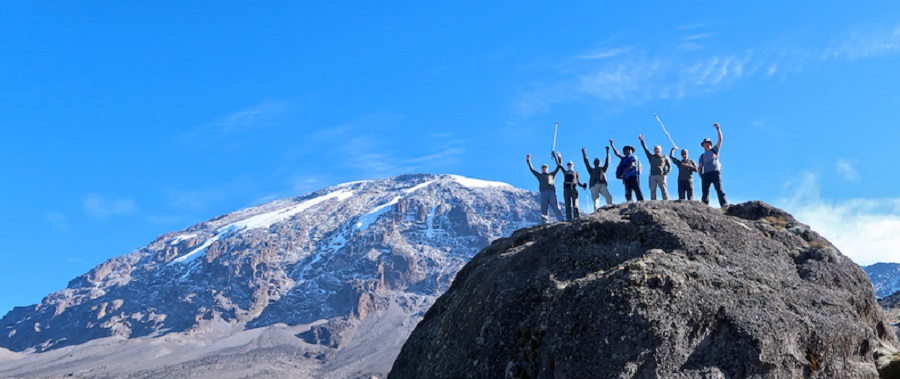
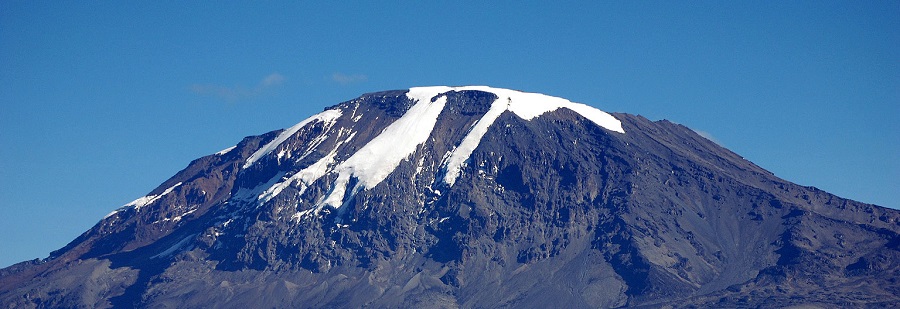
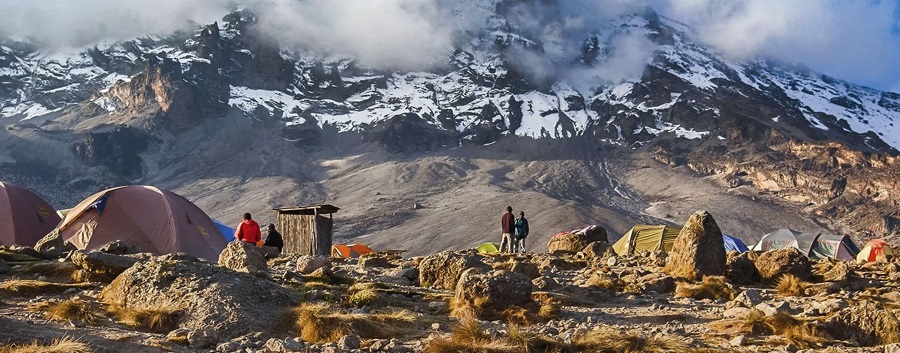
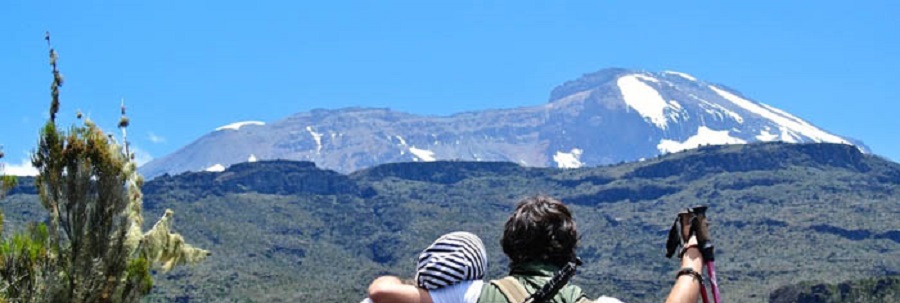
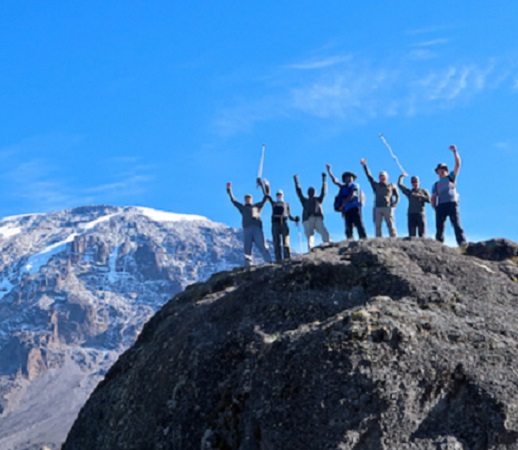
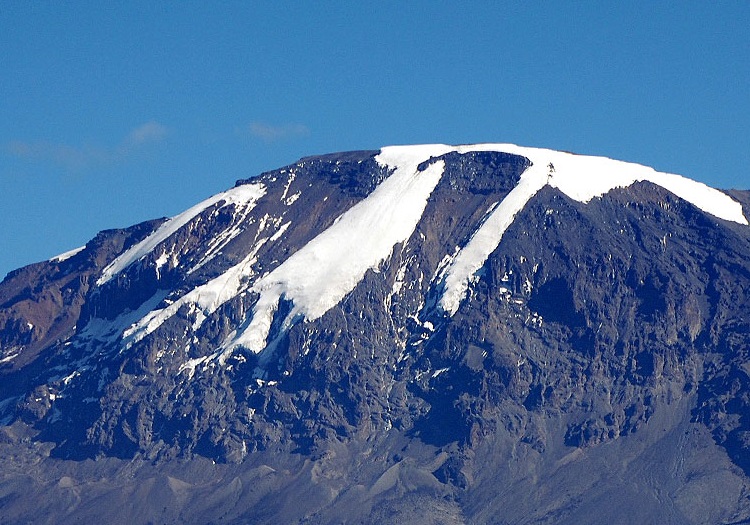
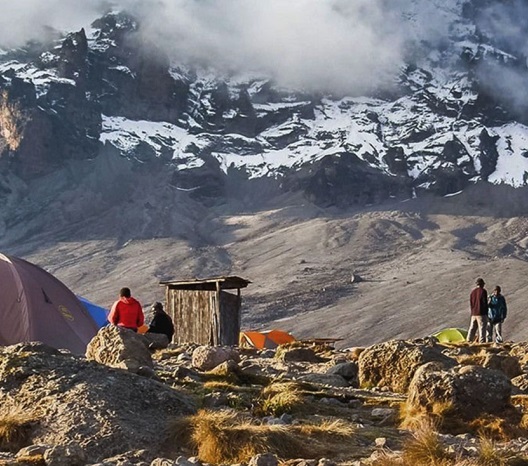
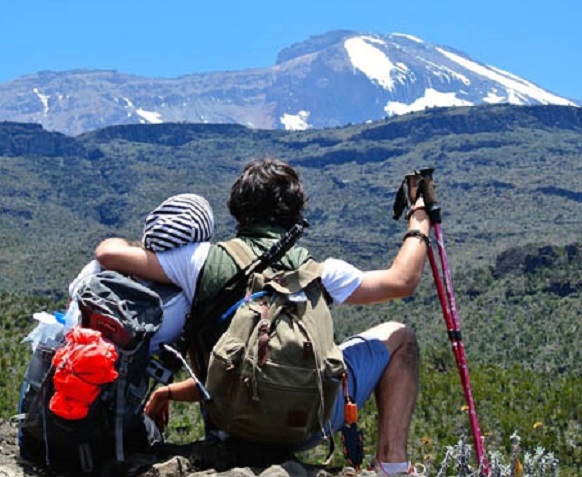
Die 8-tägige Lemosho-Route ist ein sorgfältig gestalteter Wanderweg auf dem Kilimandscharo, der ein unvergessliches Erlebnis bietet. Startend von den Lemosho-Wiesen bis zum Gipfel schlängelt sich der Weg durch üppige Wälder und Moorlandschaften und ermöglicht es Ihnen, die Schönheit von diesem Bucket-List-Ziel zu entdecken. Mit Fachwissen und unserer Premium-Geführten Tour genießen Wanderer das Beste des Kilimandscharo und sichern sich gleichzeitig eine optimale Akklimatisierung. Dieser umfassende Leitfaden hilft Ihnen, alle wichtigen Höhepunkte zu erkunden, was diese Reise zu einer einmaligen Gelegenheit macht. Buchen Sie jetzt für eine unvergessliche Reise, die mit schönen Erinnerungen für ein Leben lang gefüllt ist!
Die 8-tägige Lemosho-Route ist ein sorgfältig gestalteter Trekkingpfad am Mount Kilimanjaro, der ein unvergessliches Erlebnis bietet. Von den Lemosho Glades bis zum Gipfel schlängelt sich der Weg durch üppige Wälder und Moorlandschaften und ermöglicht es Ihnen, die Schönheit dieses Bucket-List-Ziels zu entdecken. Mit Fachwissen und unserer Premium-Guided-Tour haben Wanderer die Chance, das Beste von Kilimanjaro zu genießen und gleichzeitig eine optimale Akklimatisierung sicherzustellen. Dieser umfassende Führer hilft Ihnen, alle wichtigen Highlights zu erkunden, was es zu einer einmaligen Reise macht. Die Kosten liegen zwischen 2.800 und 3.500 US-Dollar. Buchen Sie jetzt! für eine unvergessliche Reise, die mit schönen Erinnerungen ein Leben lang gefüllt ist!
Die 8-tägige Lemosho-Route ist der ultimative Leitfaden für ein unvergessliches Erlebnis auf dem Kilimandscharo. Diese sorgfältig gestaltete Route bietet alles, was Sie wissen müssen, und ermöglicht es Wanderern, die Schönheit des pulsierenden Herzens Tansanias zu entdecken, von üppigen Wäldern bis hin zu atemberaubenden alpinen Landschaften. Mit unserer Premium-Guided-Tour profitieren Sie von Expertenrat und lokalen Spezialisten, die eine reibungslose und angenehme Reise gewährleisten. Dieser umfassende Leitfaden hebt die Sehenswürdigkeiten hervor, die man gesehen haben muss, die reiche Biodiversität und alle ikonischen Wahrzeichen entlang des Weges. Erleben Sie dieses Abenteuer auf Ihrer Bucket-List und entschlüsseln Sie die Schönheit des am meisten gefeierten Gipfels Afrikas. Buchen Sie jetzt für schöne Erinnerungen, die ein Leben lang halten!
So buchen Sie Ihre 8-tägige Lemosho-Route bei uns?
Um die 8-tägige Lemosho-Route zu buchen, kontaktieren Sie uns über die WhatsApp-Nummer +255 764 415 889 oder per E-Mail an sales@africanaturaltours.com. Wir sind 24/7 verfügbar und helfen Ihnen gerne bei der Planung Ihrer 8-tägigen Lemosho-Route. In diesem Leitfaden werden Sie entdecken, dass unsere 8-tägige Lemosho-Route für alle zugeschnitten ist – von Alleinreisenden und Familien mit Kindern bis hin zu Paaren, Hochzeitsreisenden und Freundesgruppen.

Die Lemosho-Route gilt allgemein als die beste Route am Kilimandscharo. Vor nicht allzu langer Zeit gab es nur zwei Hauptstrecken, auf denen der Kilimandscharo bestiegen wurde - die Marangu-Route und die Machame-Route. Doch als Tansanias Tourismusbranche florierte, schuf die Kilimanjaro-Parkbehörde mehr Wanderwege zum höchsten Gipfel Afrikas. Lemosho, eine relativ neue Route, wird von namhaften Betreibern aufgrund seiner Schönheit, Abgeschiedenheit und Erfolgsquote bevorzugt. Kurz gesagt, es maximiert die Chancen, dass ein Kletterer den Gipfel erreicht und die Erfahrung insgesamt genießt. Die Lemosho-Route kann in nur sechs Tagen auf dem Berg absolviert werden. Für einen besseren Zeitplan für die Höhenakklimatisierung wird es jedoch idealerweise über acht Tage angegangen. Die Wanderung beginnt am Londorossi-Tor, das sich am westlichen Fuß des Berges in seinem üppigen, fruchtbaren Regenwald befindet. Die Route führt über das Shira-Plateau, bevor Sie den südlichen Rundkurs auf halber Höhe des Berges umrunden und den Kletterer aus allen Winkeln einer großartigen Aussicht aussetzen
Sie werden gegen 08:00 Uhr von Ihrem Hotel abgeholt und zum Lemosho-Tor auf der Westseite des Kilimandscharo gebracht. Nach dem Anmeldeprozess werden Sie immer noch unseren Aufstieg durch die Wälder der Lemosho-Lichtungen beginnen, um zum Big Tree Camp zu gelangen, wo Sie die Nacht verbringen werden. Zurückgelegte Strecke: 7 km Ca. Zeitaufwand: 4 Stunden
Heute wandern Sie über eine Hochebene aus Grasmooren und Heidekraut, die mit vulkanischen Felsformationen übersät sind. Unser heutiges Ziel ist das Shira 1 Camp, von dem aus man oft einen Blick auf den Kibo Peak hat, der in den Wolken schwimmt. Wir gewinnen heute eine angemessene Höhe und Teile der Route sind ziemlich steil. Zurückgelegte Strecke: 8,5 km Ca. Zeitaufwand: 7 Std
Heute haben Sie die Möglichkeit, die nördlichen Eisfelder von der Westseite des Berges aus mit einigen ungewöhnlichen Ausblicken auf Kibo zu betrachten. Unser stetiger Aufstieg über das Moorland des Shira-Plateaus trägt zur Akklimatisierung bei und wir genießen einen großartigen Panoramablick. Unser heutiges Ziel ist das Shira 2 Camp. Am Nachmittag machen Sie einen Akklimatisierungsspaziergang und kehren dann zum Abendessen und zur Übernachtung ins Camp zurück. Zurückgelegte Strecke: 8 km Ca. Zeitaufwand: 5 Stunden
Ihre Wanderung beginnt mit einem Aufstieg mit weitreichendem Panoramablick, der Sie in die Klimazone der Hochlandwüste und auf die Lavakämme unter den Gletschern der Western Breach führt. Sie erreichen den markanten Gipfel des Lavaturms (4640 m), unseren Höhepunkt für den Tag und einen großartigen Ort, um Ihr Mittagessen zu genießen. Am Nachmittag steigen wir für die Nacht steil zu unserem Camp ab, das sich am Fuße des Great Barranco Valley (3960 m) befindet und von hohen Klippen geschützt ist. Zurückgelegte Strecke: 10 km Ca. Zeitaufwand: 7 Std
Unser Tag beginnt mit dem Abstieg zum Great Barranco, einer riesigen Schlucht. Dann verlassen wir steil die Great Barranco Wall, die uns von den südöstlichen Hängen von Kibo trennt. Es ist ein Aufstieg über Felsen, nicht technisch, aber lang und anstrengend. Unterhalb der Gletscher Heim und Kersten geht es in Richtung Karanga-Tal. Von hier aus geht es steil bergauf vom Karanga-Tal zu unserem Nachtlager im Karanga-Lager auf 3963 m. Für diejenigen, die sich stark fühlen, werden wir am Nachmittag eine Akklimatisationstour auf ca. 4200 m unternehmen, bevor wir für die Nacht zum Camp zurückkehren. Zurückgelegte Strecke: 5,5 km Ca. Zeitaufwand: 5 Stunden
Nach einer guten Nachtruhe und einem guten Frühstück machten wir uns auf den Weg zum 4640 m hohen Barafu-Camp. Der Aufstieg führt uns über einsame Geröllhalden ohne jegliche Vegetation. Es ist eine harte, steile Wanderung, die durch die Höhe erschwert wird. Bei der Ankunft im Camp essen wir und verbringen den Nachmittag in Ruhe, um uns auf eine lange Nacht und einen langen Tag vorzubereiten. Es ist wichtig, hydratisiert und warm zu halten. Wir haben ein frühes Abendessen und versuchen dann etwas zu schlafen, da wir zwischen 23:00 und 12:00 Uhr aufstehen, um den Aufstieg zum Gipfel zu beginnen. Zurückgelegte Strecke: 3 km Ca. Zeitaufwand: 3 Stunden
Wir starten gegen Mitternacht und laufen steil aufwärts zu den Gipfelgletschern. Wir werden 4 bis 5 Stunden auf Geröll klettern, aber über eine kurze Distanz unglaubliche Höhe erreichen. Die Aussichten sind spektakulär. Wir sollten am Kraterrand am Stella Point (5739 m) sein, als uns die ersten Sonnenstrahlen trafen. Spektakuläre Eisklippen im Krater umgeben uns und die Aussicht auf den zackigen Mawenzi-Gipfel und darüber hinaus ist atemberaubend. Nach einer weiteren Stunde erreichen wir den Uhuru Peak (5895 m). Wir beginnen unseren Abstieg mit der Rückkehr nach Stella Point und steigen dann auf einem Geröllhang ab und kehren zum Frühstück ins Barafu Camp zurück, bevor wir uns schließlich zum Millennium Camp begeben, um eine lange wohlverdiente Pause einzulegen. Zurückgelegte Strecke: 13,4 km Ca. Zeitaufwand: 12 - 15 Stunden
Eine sanfte Wanderung führt uns durch den Regenwald zum Mweka Gate, wo wir die Parkformalitäten erledigen und Zertifikate erhalten, die Sie mit Stolz aufhängen können! Wir werden dann von unseren Fahrzeugen abgeholt und kehren zum Hotel in Moshi zurück, wo Sie sich eine heiße Begrüßungsdusche gönnen können. Zurückgelegte Strecke: 12,1 km Ca. Zeitaufwand: 6 Stunden
o Parkgebühren,
o Campinggebühren
o Rettungsgebühren
o 18% Mehrwertsteuer auf Tourgebühren und Dienstleistungen, die fast 55% der berechneten Gesamtkosten kosten.
o Transport zum und vom Bergtor
o Professionelle Bergführer, Köche und Träger oder 3 Mahlzeiten täglich am Berg
o Gefiltertes Wasser während der gesamten Wanderung
o Faire Löhne für die Bergbesatzung, wie von der Kilimanjaro National Park Authority (KINAPA), der Kilimanjaro Association of Tour Operators (KIATO), genehmigt.
o Sowohl nationale als auch internationale Flüge
o Krankenversicherung
o Die Visakosten betragen 50 US-Dollar, außer für Inhaber eines kanadischen und US-amerikanischen Passes 100 US-Dollar
o Tipps für die Bergmannschaft
o Gegenstände persönlicher Natur
o Wäscheservice
o Ein Arzt für die Gruppe
o Alkoholische Getränke
o Eine tragbare Spültoilette mit einem Toilettenzelt ist extra (100 USD pro Toilette + Toilettenzelt).